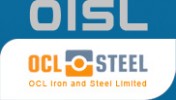Filter interviews by
Ms Agarwal Foundries Interview Questions and Answers
18 Interview questions
Excel is a spreadsheet program by Microsoft used for data organization, analysis, and visualization through formulas and charts.
Data Organization: Excel allows users to organize data in rows and columns for easy access.
Formulas: Users can perform calculations using built-in formulas, such as SUM or AVERAGE.
Charts: Excel can create various types of charts (e.g., bar, line) to visualize data trends.
Data Analysis: Fe...
A computer is an electronic device that processes data, performing calculations and executing instructions to solve problems.
Computers can perform complex calculations quickly, such as in financial modeling.
They store and retrieve vast amounts of data, like databases used in businesses.
Computers enable communication through email and video conferencing.
They run software applications for various tasks, such as word...
I seek to shift roles to leverage my skills in HR and administration for greater impact and professional growth.
Desire for professional growth: I want to expand my skills and take on new challenges.
Alignment with career goals: This position aligns with my long-term career aspirations in HR management.
Passion for HR: I am passionate about fostering a positive workplace culture and supporting employee development.
De...
The final/finished product temperature of Rebar is typically room temperature.
Rebar is typically stored and used at room temperature
The temperature of Rebar can vary depending on the environment it is stored in
Rebar is not typically heated or cooled as part of the manufacturing process
Grains in steel change in size and shape at different temperatures, affecting its properties.
At high temperatures, grains in steel are larger and more irregularly shaped.
As steel cools, grains become smaller and more uniform, leading to increased strength and hardness.
Grain boundaries can affect properties like toughness and corrosion resistance.
Examples: Austenite has smaller grains at lower temperatures, resulti...
Sulphur in steel can improve machinability but may reduce ductility and impact strength.
Advantages: Improved machinability, easier to cut and shape
Disadvantages: Reduced ductility, impact strength, and toughness
Sulphur content should be controlled to avoid negative effects on mechanical properties
Examples: Lead-free cutting steels often contain higher sulphur levels for better machinability
Chromium content in steel typically ranges from 10-30% depending on the grade and type of steel.
Chromium is added to steel to improve its corrosion resistance, hardness, and strength.
Stainless steel typically contains around 10-30% chromium.
High-chromium steels, such as tool steels, can contain up to 30% chromium.
Chromium content can vary based on the specific grade and application of the steel.
Handling manpower involves effective recruitment, training, motivation, and management of employees.
Recruit qualified individuals through a thorough hiring process
Provide comprehensive training and development programs
Motivate employees through recognition, rewards, and career advancement opportunities
Implement effective performance management systems
Promote open communication and teamwork
Ensure a healthy work-lif...
Yes, we can provide the cheapest quotes for marketing products through our extensive network of suppliers and negotiation skills.
Utilize our network of suppliers to get competitive quotes
Negotiate with suppliers to get the best prices
Consider bulk discounts or special promotions for additional savings
Yes, vendor payments can be delayed under certain circumstances.
Vendor payment delays may be possible with prior agreement from the vendor.
Negotiate new payment terms with the vendor to delay payment.
Consider the impact on vendor relationships and future business dealings.
Ensure that delaying payments does not breach any contractual agreements.
Communicate openly and transparently with vendors about the delay.
Docum...
Ms Agarwal Foundries Interview Experiences
18 interviews found
(2 Questions)
- Q1. Tel me your Shelf introduction
- Ans.
I am a dedicated HR professional with 5 years of experience in recruitment, employee relations, and performance management.
5 years of experience in HR
Specialize in recruitment, employee relations, and performance management
Strong communication and interpersonal skills
Proven track record of successfully managing HR processes
Passionate about creating a positive work environment
- Q2. Explain about your past work experience
- Ans.
I have over 5 years of experience in HR, including recruitment, onboarding, and employee relations.
Recruitment: Conducted interviews, screened candidates, and managed job postings.
Onboarding: Facilitated orientation sessions and ensured new hires had a smooth transition.
Employee Relations: Addressed employee concerns, conducted investigations, and implemented solutions.
Training and Development: Coordinated training pro...
I applied via AmbitionBox and was interviewed in Dec 2024. There were 2 interview rounds.
The aptitude test at MS Agarwal Foundries typically assesses numerical reasoning, logical thinking, verbal ability, and problem-solving skills to evaluate candidates' suitability for roles.
The Group Discussion (GD) at MS Agarwal Foundries evaluates candidates' communication skills, teamwork, and ability to express ideas clearly in a collaborative setting
Interview Preparation Tips
(2 Questions)
- Q1. Basic questions about you and your family?
- Q2. About Qualification & experience
(2 Questions)
- Q1. Experience related
- Q2. Saftey related & environmental related
(2 Questions)
- Q1. Particular area related like hydraulic, projects, mechanical.
- Q2. Particular area related like matellargy & heat treatment
Interview Preparation Tips
(2 Questions)
- Q1. Percentage of chromium in steel?
- Ans.
Chromium content in steel typically ranges from 10-30% depending on the grade and type of steel.
Chromium is added to steel to improve its corrosion resistance, hardness, and strength.
Stainless steel typically contains around 10-30% chromium.
High-chromium steels, such as tool steels, can contain up to 30% chromium.
Chromium content can vary based on the specific grade and application of the steel.
- Q2. Advantages and Disadvantage of Sulphur in steel?
- Ans.
Sulphur in steel can improve machinability but may reduce ductility and impact strength.
Advantages: Improved machinability, easier to cut and shape
Disadvantages: Reduced ductility, impact strength, and toughness
Sulphur content should be controlled to avoid negative effects on mechanical properties
Examples: Lead-free cutting steels often contain higher sulphur levels for better machinability
(3 Questions)
- Q1. Grades of steel and Their Chemical Composition
- Ans.
Different grades of steel have varying chemical compositions to meet specific requirements.
Grades of steel include carbon steel, alloy steel, and stainless steel.
Carbon steel typically contains 0.05-2.0% carbon.
Alloy steel contains additional elements like nickel, chromium, and molybdenum.
Stainless steel has high chromium content for corrosion resistance.
Each grade has unique properties based on its chemical compositio...
- Q2. Sectional weight of steel for different sizes
- Ans.
Sectional weight of steel varies based on the size of the steel section.
The sectional weight of steel is calculated by multiplying the volume of the steel section by the density of steel.
Different sizes of steel sections have different sectional weights.
For example, a 100mm x 100mm x 10mm steel section will have a different sectional weight compared to a 150mm x 150mm x 12mm steel section.
- Q3. What are the grains and grain structures inside the steel at different temperatures?
- Ans.
Grains in steel change in size and shape at different temperatures, affecting its properties.
At high temperatures, grains in steel are larger and more irregularly shaped.
As steel cools, grains become smaller and more uniform, leading to increased strength and hardness.
Grain boundaries can affect properties like toughness and corrosion resistance.
Examples: Austenite has smaller grains at lower temperatures, resulting in...
Interview Preparation Tips
I applied via Naukri.com and was interviewed in Jun 2024. There were 2 interview rounds.
(2 Questions)
- Q1. What is the chromium percentage in steel?
- Ans.
Chromium percentage in steel varies depending on the type of steel, typically ranging from 10.5% to 30%.
Chromium is added to steel to improve its corrosion resistance and hardenability.
Stainless steel typically contains around 10.5-30% chromium.
Examples of chromium-containing steel include 304 stainless steel (18% chromium) and 420 stainless steel (12% chromium).
- Q2. Sulphur Advantages and Disadvantages in Steel
- Ans.
Sulphur can improve machinability and strength in steel, but can also lead to brittleness and reduced ductility.
Advantages of sulphur in steel include improved machinability, allowing for easier cutting and shaping of the material.
Sulphur can also enhance the strength of steel, making it more suitable for certain applications.
Disadvantages of sulphur in steel include increased brittleness, which can lead to cracking an...
(2 Questions)
- Q1. What are the Grain structures of steel at different temperatures?
- Ans.
Grain structures of steel change at different temperatures affecting its properties.
At room temperature, steel has a fine grain structure which provides good strength and toughness.
As temperature increases, the grain size also increases, leading to reduced strength and toughness.
At high temperatures, steel can have a coarse grain structure which may result in lower mechanical properties.
Grain refinement techniques like...
- Q2. What is the final/finished product temperature of Rebar?
- Ans.
The final/finished product temperature of Rebar is typically room temperature.
Rebar is typically stored and used at room temperature
The temperature of Rebar can vary depending on the environment it is stored in
Rebar is not typically heated or cooled as part of the manufacturing process
Interview Preparation Tips
Assistant HR and Administration Manager Interview Questions & Answers
posted on 17 Dec 2024
I applied via LinkedIn and was interviewed in Nov 2024. There was 1 interview round.
(2 Questions)
- Q1. Admin roles and responsibility
- Q2. Why want to shift
- Ans.
I seek to shift roles to leverage my skills in HR and administration for greater impact and professional growth.
Desire for professional growth: I want to expand my skills and take on new challenges.
Alignment with career goals: This position aligns with my long-term career aspirations in HR management.
Passion for HR: I am passionate about fostering a positive workplace culture and supporting employee development.
Desire ...
Interview Preparation Tips
- Q1. What is logistics
- Ans.
Logistics involves the planning, execution, and management of the flow of goods and services from origin to consumption.
Involves transportation management, such as shipping products from a warehouse to a retailer.
Includes inventory management, ensuring the right amount of stock is available to meet demand.
Encompasses warehousing, where goods are stored before distribution.
Involves order fulfillment, processing customer...
- Q2. What is computer
- Ans.
A computer is an electronic device that processes data, performing calculations and executing instructions to solve problems.
Computers can perform complex calculations quickly, such as in financial modeling.
They store and retrieve vast amounts of data, like databases used in businesses.
Computers enable communication through email and video conferencing.
They run software applications for various tasks, such as word proc...
- Q3. What is excel
- Ans.
Excel is a spreadsheet program by Microsoft used for data organization, analysis, and visualization through formulas and charts.
Data Organization: Excel allows users to organize data in rows and columns for easy access.
Formulas: Users can perform calculations using built-in formulas, such as SUM or AVERAGE.
Charts: Excel can create various types of charts (e.g., bar, line) to visualize data trends.
Data Analysis: Feature...
- Q4. What is planning
- Ans.
Planning is the process of setting objectives and determining a course of action to achieve them effectively.
Identifying goals: For example, a billing clerk may set a goal to reduce billing errors by 20%.
Resource allocation: Planning involves deciding how to allocate time and tools, like using billing software efficiently.
Timeline creation: Establishing deadlines for billing cycles to ensure timely invoicing.
Risk asses...
I applied via Recruitment Consulltant and was interviewed in Apr 2024. There were 2 interview rounds.
(2 Questions)
- Q1. Salary negotiation
- Q2. Are you interested to join in the plant
- Ans.
Yes, I am interested in joining the plant as a Senior Manager.
I have experience in managing teams and projects
I am excited about the opportunity to contribute to the growth and success of the plant
I am confident in my ability to lead and make strategic decisions
(1 Question)
- Q1. Brief about work done
- Ans.
I have led cross-functional teams to successfully launch multiple products, resulting in increased market share and revenue growth.
Led cross-functional teams in product launches
Achieved increased market share and revenue growth
Implemented successful strategies for product development
Collaborated with stakeholders to drive project success
Interview Preparation Tips
(5 Questions)
- Q1. How u prove the best
- Q2. How to handle manpower
- Ans.
Handling manpower involves effective recruitment, training, motivation, and management of employees.
Recruit qualified individuals through a thorough hiring process
Provide comprehensive training and development programs
Motivate employees through recognition, rewards, and career advancement opportunities
Implement effective performance management systems
Promote open communication and teamwork
Ensure a healthy work-life bal...
- Q3. What is ur previous experience
- Q4. How to handle villagespeople
- Ans.
Handling villagers requires understanding their needs, building relationships, and addressing community concerns.
Listen actively to villagers' concerns and needs
Build trust and rapport by engaging in open and respectful communication
Involve villagers in decision-making processes and seek their input
Address community concerns by implementing sustainable solutions
Provide necessary resources and support to empower village...
- Q5. What about cctv

Group discussions company nd management discussed nd team members
(1 Question)
- Q1. Company HR department se discuss reporting situation salary timing company noms
(1 Question)
- Q1. I joined this company
- Ans. In which area dose the company want me give me responsibility now
Getting complete information about the work nd getting the work done in a Good way
(1 Question)
- Q1. In wich department our company product is approved get information about all these things
Getting information company lab nd understanding that test from senios
Understand in wich department to get information nd through wich route the company has to get the payment done
We should have so much confidence in the work for wich we are taking responsibility that we can do that work under a plan
(1 Question)
- Q1. If work is done with foolproof planning than the work gets done easily
Interview Preparation Tips
Top trending discussions






Ms Agarwal Foundries Interview FAQs
Tell us how to improve this page.
Ms Agarwal Foundries Interviews By Designations
- Ms Agarwal Foundries Quality Engineer Interview Questions
- Ms Agarwal Foundries AGM Operations Interview Questions
- Ms Agarwal Foundries Project Manager Interview Questions
- Ms Agarwal Foundries Junior Executive Interview Questions
- Ms Agarwal Foundries HR Executive Interview Questions
- Ms Agarwal Foundries Executive Interview Questions
- Ms Agarwal Foundries Mechanical Engineer Interview Questions
- Ms Agarwal Foundries Senior Manager Interview Questions
- Show more
Interview Questions for Popular Designations
- Intern Interview Questions
- Business Analyst Interview Questions
- Senior Associate Interview Questions
- Senior Engineer Interview Questions
- Associate Software Engineer Interview Questions
- Graduate Engineer Trainee (Get) Interview Questions
- Java Developer Interview Questions
- Senior Software Engineer Interview Questions
- Show more
Overall Interview Experience Rating
based on 18 interview experiences
Difficulty level
Duration
Interview Questions from Similar Companies
Ms Agarwal Foundries Reviews and Ratings
based on 249 reviews
Rating in categories
|
Assistant Manager
34
salaries
| ₹4.8 L/yr - ₹9 L/yr |
|
Purchase Executive
21
salaries
| ₹1.8 L/yr - ₹5.4 L/yr |
|
Senior Engineer
16
salaries
| ₹3.6 L/yr - ₹9 L/yr |
|
Executive
12
salaries
| ₹3.5 L/yr - ₹5.9 L/yr |
|
Senior Executive
12
salaries
| ₹3.8 L/yr - ₹8.1 L/yr |

B.C. Jindal Group of Companies

Bharat Wire Ropes

Patton International

Salasar Techno Engineering
- Home >
- Interviews >
- Ms Agarwal Foundries Interview Questions













